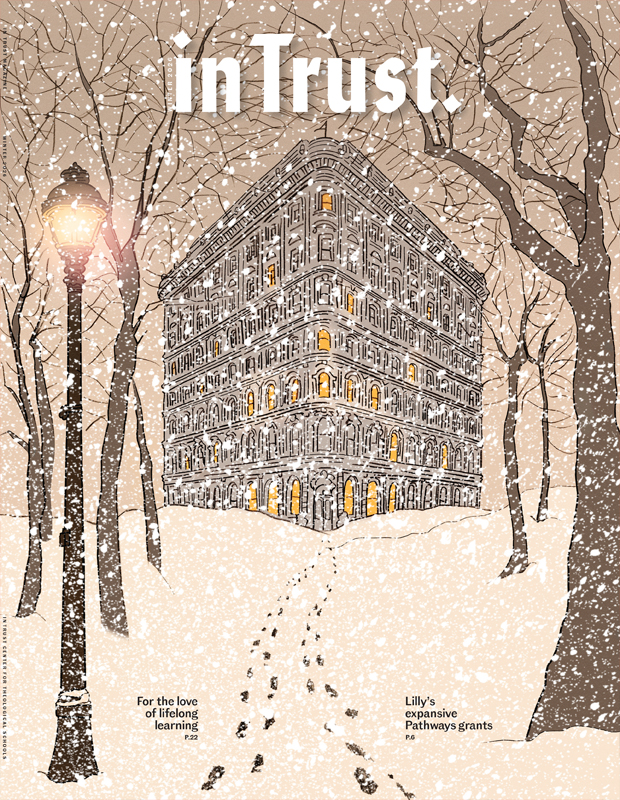Latina/o Theology and Ministry Leadership Network
The Jesuit School of Theology at Santa Clara University‘s Pathways for Tomorrow project, “Latina/o Theology and Ministry Leadership Network,” aims to unite educational institutions, dioceses, congregations, philanthropies, and other organizations throughout the Western region. The project’s goal is to create high-quality educational and professional training programs in accessible formats that are relevant to Latina/o pastoral ministers and those serving Latina/o congregations.
Cecilia Titizano La Fuenta, project director of the Latina/o Theology and Ministry Leadership Network, shares the project’s progress and how the school plans to work collaboratively to support Latinx candidates and ministers.
Briefly describe the project.
The project consists of two main parts with a goal to form lay leaders for ministry within the Catholic context, especially in Region 11 (regions are how the Catholic Church is organized in the United States). This project is dedicated to strengthening Santa Clara University, various schools in the Graduate Theological Union, and creating a network that supports comprehensive ministry and spiritual formation. The formation offered can be only is everyday life and academia, with a particular emphasis on the Latina, Latino, LatinX, and Hispanic communities. The project is multifaceted to achieve these goals.
What have you learned so far?
One key insight we have learned is the rapidly evolving landscape of theological ministerial formation, highlighting the need to adapt. The environment is changing, and determining the best ways to serve effectively, which is a central focus for us.
Another major lesson has been the difficulties of driving institutional change. While we have focused on strengthening Santa Clara University and already have strong partnerships in place, the need to move faster has become clear. We are actively building networks, but the question now is how to advance more efficiently. That’s part of what we are learning.
With any project like this, you write it, but as you dive into it, you realize it is different than what you thought. You might catch yourself thinking, “I hadn’t thought of that,” or “This huge part wasn’t in the grant!” Having flexibility and patience with the situation is necessary. We have our hopes, we carry on, realizing it might not go the way we thought. It’s not necessarily bad; it’s more about the adjustments we have to make.
We had to present the grant on a short timeline, focusing on our best hopes and our preconceived strengths. But as we realized in conversations with partners, we realized that our strengths may actually lie in different areas right now. This is one of the beautiful things I’m excited about.
There are many approaches to a project. In this particular case, we decided to focus on strengthening our relationships with dioceses, to be able to hear from our partners, “This is what we need.” Then re could reply, “How will we make this happen?”
The realities of Latina/Latino/Latinx Hispanic ministry are complex. We have the diocesan structure, major national planning Hispanic ministry meetings, a global synod, and evolving guidelines that dioceses are adjusting to. So, being strong partners is essential and complicated.
Trends indicate that growth of the Catholic Church is concentrated in the Western United States, predominately within Hispanic communities. These are second and third-generation Catholics who speak English as their first language. Traditionally, Hispanic ministry has been associated with Spanish ministry, but bilingualism is increasingly common. In some parts of the country, English might be the dominant language, so how do you adjust considering new immigrants continue to arrive with their native languages.
We had to decide about which programs to continue in Spanish, and which to build in English.
Can we keep this space of creativity? Can we do pilot projects and tests, being open to what the results tell us? And not from a place of “This didn’t work!” but a place of “This can work this way.”
What has surprised you along the way?
I can’t imagine this would only be an issue for us. The desire to expand, to provide, to be creative, and to offer alternative ways for theological formation is strong, but the slow administrative process of the work done is also there. Engaging a diverse community takes time, especially considering when they are outspoken about wanting something new.
Many schools across the country are striving to become Hispanic-serving institutions, but this requires a huge commitment by the institution. It’s not just about attracting students; it’s about creating a community where they see themselves as vibrant members. This is challenging, for many reasons, one of which is that the presence of Latinas is very, very low in those spaces (lower even than Latinos, our brothers). I guess it shouldn’t be surprising, but it is, especially given the expressed desire to serve them.
What have been a few of your successes?
Internally, strengthening our relationships with other schools and departments at Santa Clara is huge. To connect more, communicate better, collaborate on projects, creating successful new programming. Externally, our relationships with Hispanic ministries in the region are equally important. While we are partnering with the organization and leadership of Region 11, our goal is not to take control but to support and share ownership.
We have developed specialized and ongoing formation programs to replace the more general ones we’ve previously offered, allowing us to serve more people. As a result, we are seeing an increase in students coming our way for different things.
Santa Clara recently finished their strategic plan, and aligned our strategic plan with theirs, committing to making sure that JST becomes its theological center. As the national theological center of the West, our commitment to hiring more Latina/o faculty, building that faculty, and transforming our programs into a major center of excellence reflects on the work we’ve been doing. This underscores the huge areas of potential we have and the need to serve.
What are you hopeful about?
As we are in the midst of piloting the program and don’t know the results, I hope the results will provide us with guidelines for creating sustainable programs. Our goal is for whatever we create to be used strategically, ensuring its sustainability.
I want to avoid creating something that relies on temporary funding. Instead, I hope the changes become part of JST and Santa Clara’s DNA and that it is sustained. That’s my deepest hope.
What have you learned that could help other schools?
I have learned the importance of reading and understanding the context of your situation. It’s important to be clear about the desire for something to happen, which doesn’t necessarily translate to immediate commitment. Making things happen requires time and effort.
It’s important to be clear and honest Being clear about the complexities of universities in the colonial legacy. We must be fully aware of that. As we navigate through a transition period, the Lilly grant recognizes these challenges and encourages universities to innovate. The goal is to create something that addresses the evolving landscape of theological education.
Academia has its issues, its lights and shadows. Education has not been accessible to everybody and long viewed as a privilege reserved for a select few. The notion that higher education is only for the best and the brightest is not true. Economic realities prevent many students, especially Latina women in their late 30s-mid 40s, who have been serving the Church for decades. Despite their efforts, they often struggle to pursue undergraduate studies. The system is not designed to support everyone, and it’s not true that only the best and the brightest make it into academia.
When projects like this arise, they offer a mirror to the institution. It’s important to ask questions – some uncomfortable questions – but ask them in a constructive way rather than criticism.






















